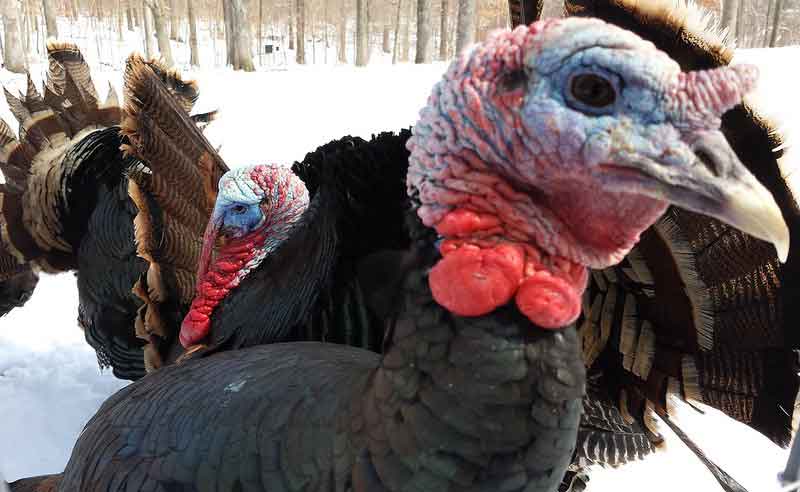Turkey Hunting in Missouri – A Complete Guide
Ah, turkey hunting in Missouri – the thrill of the chase, the beauty of the great outdoors, and the satisfaction of a successful hunt. There’s nothing quite like it. As a turkey hunting expert and blogger, I’m here to help you navigate the ins and outs of this beloved pastime in the Show-Me State. So, let’s dive right in!
Scouting the Best Turkey Hunting Spots in Missouri
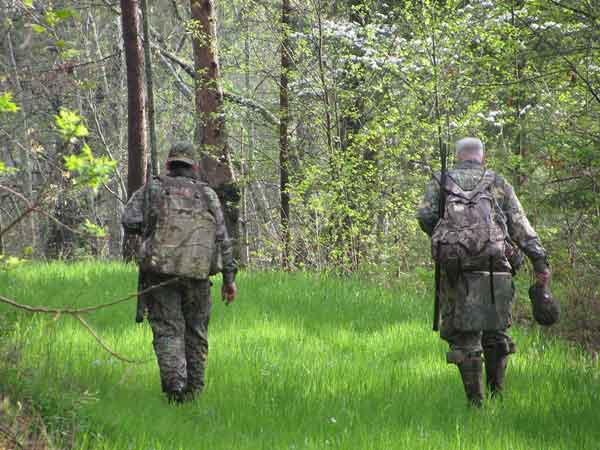
Missouri’s diverse landscapes, abundant wildlife, and strong conservation efforts make it an ideal destination for turkey hunting enthusiasts. From lush forests to rolling hills, there’s a perfect spot for everyone. Here’s an expanded breakdown of some prime turkey hunting 🦃areas to explore:
1. Missouri River Breaks: A Rugged Wonderland for Turkey Hunters
Located along the Missouri River, the breaks offer a mix of steep hills, dense forests, and open grasslands. This varied terrain provides excellent habitat for wild turkeys and presents a challenging yet rewarding hunting experience. Key areas within the Missouri River Breaks include:
- Big Muddy National Fish and Wildlife Refuge: This expansive refuge is home to a thriving wild turkey population, making it a top choice for hunters seeking a true wilderness experience.
- Pershing State Park: With its combination of wetlands, prairies, and forests, Pershing State Park is a turkey hunting hotspot that offers both beauty and adventure.
2. Ozark National Scenic Riverways: A Turkey Hunting Haven
The Ozark National Scenic Riverways encompass over 80,000 acres of public land, with the Current and Jacks Fork rivers running through it. This region is renowned for its diverse ecosystems and abundant wildlife, including wild turkeys. Prime turkey hunting spots within the riverways include:
- Peck Ranch Conservation Area: This 23,000-acre area features a mix of forest, glades, and savannas, providing prime turkey habitat and ample hunting opportunities.
- Rocky Creek Conservation Area: With over 7,000 acres of hardwood forests, fields, and glades, Rocky Creek offers turkey hunters a challenging and diverse landscape to explore.
3. Mark Twain National Forest: A Turkey Hunter’s Dream Destination
Spanning over 1.5 million acres, Mark Twain National Forest is a treasure trove for turkey hunters. With its vast expanses of oak and hickory forests, it offers an abundance of ideal turkey habitat. Some top hunting spots within the forest include:
- Cedar Creek District: This area boasts numerous glades, woodlands, and savannas, providing a diverse landscape for turkey hunters to navigate.
- Houston/Rolla District: Known for its extensive oak-hickory forests, the Houston/Rolla District offers prime turkey habitat and excellent hunting opportunities.
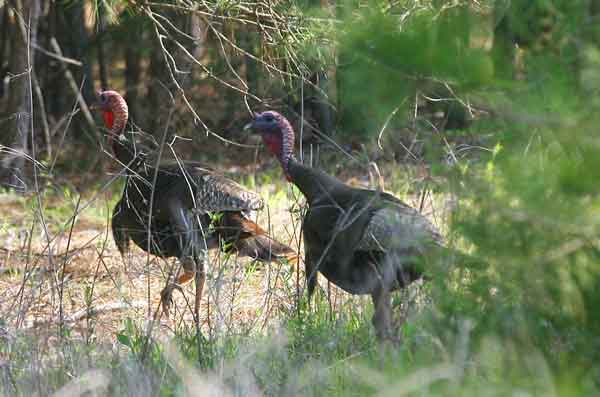
Scouting Tips for Finding Your Ideal Hunting Spot
When searching for the perfect turkey hunting location in Missouri, keep these tips in mind:
- Research public land: Investigate Missouri’s numerous conservation areas, state parks, and national forests to find a spot that suits your hunting preferences.
- Look for signs of turkey activity: Keep an eye out for tracks, droppings, and scratched-up leaves, which indicate turkeys have been foraging in the area.
- Talk to local hunters and biologists: Networking with experienced hunters and local wildlife biologists can provide invaluable insights into the best hunting spots and turkey population trends.
Take the time to research and scout these prime turkey hunting areas in Missouri, you’ll be better prepared to enjoy a successful and memorable hunting adventure. 😊
Understanding Missouri’s Turkey Hunting Regulations: Ensuring a Safe and Legal Hunt
Before embarking on your turkey hunting adventure in the Show-Me State, it’s crucial to familiarize yourself with Missouri’s hunting regulations. These rules are designed to promote sustainable wildlife management, ensure hunter safety, and protect the environment. Here’s a comprehensive overview of the key regulations you need to know:
License Requirements and Fees
To legally hunt turkeys in Missouri, you must possess a valid hunting license and turkey permit. License and permit fees vary depending on your residency status, age, and the hunting season. Key points to consider include:
- Resident vs. non-resident: Non-residents pay higher fees for hunting licenses and permits than Missouri residents.
- Youth permits: Reduced fees are available for hunters aged 6-15.
- Landowner permits: Missouri landowners with 75 acres or more may be eligible for free or reduced-cost permits.
Spring and Fall Hunting Seasons
Missouri’s turkey hunting seasons are divided into two distinct periods: spring and fall. Each season has specific regulations to ensure sustainable hunting practices:
- Spring season: Typically running from mid-April to early May, the spring season targets male turkeys or bearded hens only. Hunting hours are limited to one half-hour before sunrise to 1:00 PM.
- Fall season: The fall season typically takes place in October and allows for the harvest of any turkey, regardless of sex. Hunting hours are from one half-hour before sunrise to sunset.
Hunting Hours and Legal Shooting Methods
Understanding hunting hours and legal shooting methods is essential for a safe and legal turkey hunt in Missouri. Key regulations include:
- Hunting hours: As mentioned above, spring turkey hunting hours are limited to one half-hour before sunrise to 1:00 PM, while fall hunting hours span from one half-hour before sunrise to sunset.
- Legal shooting methods: Shotguns (20-gauge or larger), longbows, recurve bows, and crossbows are the only legal weapons for turkey hunting in Missouri. Rifles and handguns are prohibited.
Bag Limits and Tagging Procedures
To ensure sustainable turkey populations, Missouri enforces bag limits and tagging procedures:
- Bag limits: During the spring season, hunters are allowed a maximum of two male turkeys or bearded hens, with only one taken per day. The fall season allows for a maximum of two turkeys of either sex.
- Tagging procedures: Upon harvesting a turkey, hunters must immediately notch their permit with the date of harvest and attach the permit to the turkey. The permit must remain attached until the turkey is processed for consumption.
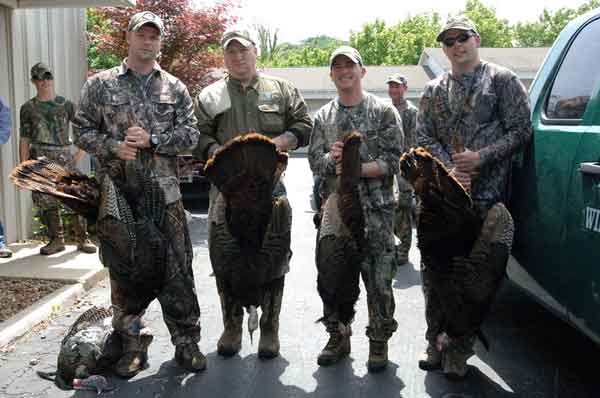
Essential Gear and Tips for Turkey Hunting Success: Maximize Your Experience in the Field
Equipping yourself with the right gear and following expert tips will significantly increase your chances of success and make your turkey hunting adventure more enjoyable. Here’s an expanded list of essential gear and valuable tips for mastering the art of turkey hunting:
Essential Gear for Every Turkey Hunter
- Camouflage clothing: Head-to-toe camouflage helps you blend in with your surroundings and avoid detection by wary turkeys. Be sure to choose a pattern that matches the terrain and season.
- Comfortable, durable boots: Quality waterproof boots provide essential support and comfort during long treks through the woods.
- Turkey calls: A variety of calls, such as box calls, slate calls, and mouth calls, will help you mimic turkey sounds and attract your quarry.
- Decoys: Realistic turkey decoys can be an effective way to lure in wary birds and increase your chances of a successful harvest.
- Shotgun or bow: Choose a shotgun (20-gauge or larger) or a suitable archery setup (longbow, recurve bow, or crossbow) according to Missouri’s legal shooting methods for turkey hunting.
- Ammunition or arrows: Pack enough ammunition or arrows for your chosen weapon, and opt for turkey-specific loads or broadheads for maximum effectiveness.
- Binoculars and rangefinder: Quality binoculars help you spot turkeys from a distance, while a rangefinder ensures accurate shot placement.
- Hunting license and tags: Carry your valid hunting license and turkey permit with you at all times, as required by Missouri’s regulations.
- First-aid kit: A basic first-aid kit is essential for addressing minor injuries or emergencies in the field.
Tips for Turkey Hunting Success
- Scout before the season: Spend time scouting your hunting area before the season starts to identify turkey habitat, roosting sites, and travel routes.
- Master your calling: Practice your turkey calling skills to convincingly imitate a variety of turkey sounds and effectively communicate with the birds.
- Stay still and quiet: Turkeys have incredible eyesight and can detect even the slightest movement. Stay as still and quiet as possible to avoid spooking them.
- Set up in a strategic location: Position yourself near known roosting sites, feeding areas, or travel routes to increase your chances of encountering turkeys.
- Utilize decoys effectively: Set up decoys within your shooting range and arrange them to create a realistic scene that draws in curious birds.
- Be patient: Turkey hunting can be challenging, and success doesn’t always come quickly. Stay patient and persistent, and remember that the experience is as much about enjoying nature as it is about harvesting a bird.
- Practice safe firearm handling: Always follow proper firearm safety guidelines, such as treating every gun as if it’s loaded, keeping the muzzle pointed in a safe direction, and being sure of your target and what’s beyond.
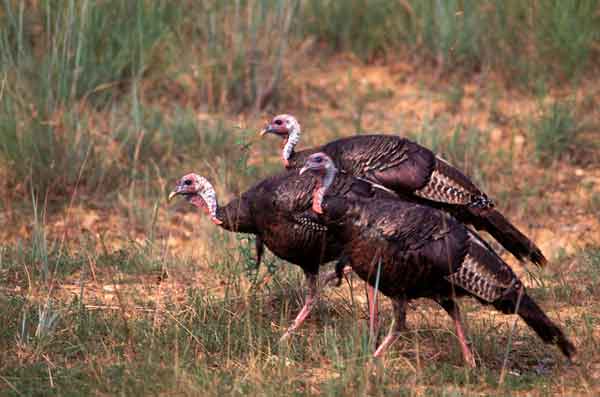
Honing Your Turkey Hunting Skills: Master the Art of the Hunt
To maximize your chances of success and enjoyment in the field, it’s essential to continually sharpen your turkey hunting skills. From mastering the art of calling to improving your woodsmanship, here are some key areas to focus on and expert tips to help you become a better turkey hunter 🦃:
Mastering Turkey Calls
- Learn the language: Understand the various turkey vocalizations, such as yelps, purrs, clucks, and gobbles, and learn when and how to use them effectively.
- Practice with different calls: Become proficient with a range of turkey calls, including box calls, slate calls, mouth calls, and push-button calls, to suit different situations and personal preferences.
- Listen to real turkeys: Spend time observing and listening to wild turkeys to learn their natural cadence and pitch, and then try to mimic their sounds with your calls.
Reading Turkey Sign
- Identify tracks: Learn to recognize turkey tracks and distinguish them from other wildlife in the area. This skill will help you locate turkeys and follow their movements.
- Spot droppings: Familiarize yourself with the appearance of turkey droppings to identify active feeding and roosting areas.
- Recognize feeding sign: Look for signs of turkey feeding, such as scratched-up leaves, overturned logs, or eaten acorns, to pinpoint prime hunting spots.
Developing Woodsmanship
- Know your terrain: Study maps, aerial photos, and topographical data to understand your hunting area’s layout and identify potential turkey hotspots.
- Improve your stealth: Practice moving quietly and stealthily through the woods, avoiding snapping twigs or rustling leaves, to get closer to wary turkeys.
- Learn to sit still: Develop the ability to sit still for extended periods, as even the slightest movement can alert turkeys to your presence.
Enhancing Shooting Skills
- Practice regularly: Whether you’re using a shotgun or a bow, regular practice is essential to improving accuracy and shot placement.
- Know your effective range: Understand the limitations of your chosen weapon and only take shots within your effective range to ensure ethical, clean kills.
- Adapt to different shooting positions: Practice shooting from various positions, such as standing, kneeling, or sitting, to prepare for any situation in the field.
Planning and Patience
- Develop a game plan: Formulate a hunting strategy based on your scouting, knowledge of turkey behavior, and understanding of the terrain.
- Adapt to changing conditions: Be prepared to adjust your tactics in response to changing weather, turkey behavior, or hunting pressure.
- Exercise patience: Turkey hunting can be a waiting game, so develop the mental fortitude to remain patient and persistent even when success seems elusive.
By focusing on these key areas and continually honing your turkey hunting skills, you’ll be well-equipped to enjoy more rewarding and successful hunts in Missouri’s beautiful wilderness.
Show-Me Turkeys! (in Missouri)
Embarking on a turkey hunting adventure in Missouri is an experience like no other. With a little preparation, expert knowledge, and the right attitude, you’ll be well on your way to enjoying this exciting outdoor tradition. So, gear up, head out, and let the hunt begin!

